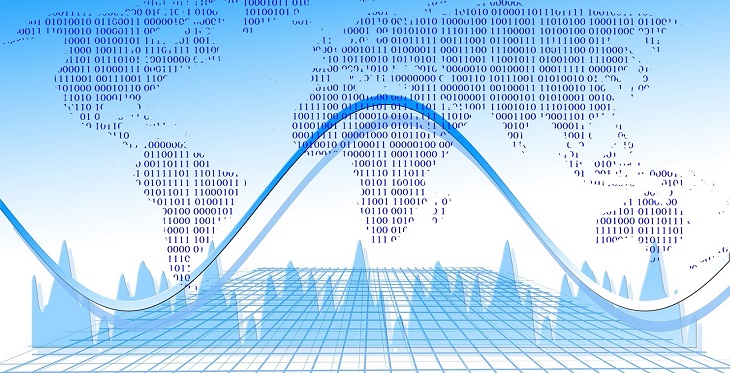The way we view healthcare is changing—patients are starting to expect more convenient options and have access to more information about their health. New technology has helped telehealth to become a reality for many patients without easy access to healthcare facilities. It has helped healthcare facilities fill gaps in specialty care via telemedicine, and has helped all patients play a larger role in their own care. However, there are still obstacles ahead of widespread telemedicine adoption that will need to be addressed in coming years. Both telemedicine and analytics are major areas of interest for healthcare IT investors, reaching $197 million (analytics) and $171 million (telehealth) in 2016. These two areas go hand in hand, as big data analytics are helping to advance telemedicine and empower both physicians and patients. Here are five ways big data is playing a role in telehealth.
1. Remote patient monitoring
Smart devices are the future of telehealth monitoring, and they rely on the power of big data. These “Internet of Medical Things” (IoMT) devices are internet-connected devices that perform a variety of specialized functions, and communicate with one another, as well as cloud health information systems that use algorithms to process these data streams and alert healthcare teams of trends and values that signify potential problems and require healthcare provider analysis and possible intervention. While commercial “Internet of Things” (IoT) devices often focus on home goods, like smart thermostats, IoMT in healthcare focuses primarily on remote patient monitoring.
Remote health monitoring involves the use of smart devices to provide real-time data on vital patient measurements such as blood pressure and heart rate. This system of monitoring can help keep high-risk individuals out of the hospital, and allow doctors, patients, and caregivers to track the patient’s overall health. This not only helps to predict life-threatening events and keeps more patients out of the hospital, it cuts down on costs and allows patients to live healthier, more comfortable lives. Real-time data can even help doctors administer the correct medication dosages, improving care. Smart devices will soon be a staple in the healthcare industry--by 2020, an estimated 40 percent of IoT devices will have healthcare applications.
2. Easier, more accurate diagnostics
One of the disadvantages of telemedicine is that the doctor cannot rely on his or her physical touch or listen to the patient’s heart or stomach. Because of this, diagnostics can be more difficult when patients are not onsite. Using a patient’s electronic health records, however, combined with the doctor’s observations, can help identify high-risk patients and diagnose patients more effectively.
Using data to diagnose in telemedicine is very important, especially in situations when a patient absolutely cannot get to a doctor, such as when a sailor has a medical issue on board a vessel at sea. With a patient’s vital signs and status information a doctor would potentially be able to make a life-saving recommendation without ever having to see the patient in person. Doctors can use big data to bring in contextual data and a huge amount of potentially useful external information, in addition to the limited information available from patients in extremely remote areas, to help with the diagnosis.
3. Drone applications for disasters
Telehealth isn’t just for people who live in rural areas and have trouble getting to a doctor. It’s also becoming an important part of disaster relief—getting to people who are in the middle of a terrible situation. They may be stuck, or help may not be able to reach them yet, which is where drones (and data) can help.
Drones use and collect data to navigate and perform reconnaissance after a disaster. They can be deployed into an area hit by a natural disaster, and show healthcare and disaster relief officials what’s really going on at the ground level. Then, drones can be deployed to deliver supplies, including medical equipment, to areas where they’re needed the most. Someday, drones could even be used to deliver supplies to patients in rural and even urban areas not facing disaster. There have already been demonstrations of drones delivering defibrillators in advance of paramedics arriving on scene.
4. Leveraging healthcare apps
Many problems become major issues because they are not caught quickly. Patients who make a point to monitor their own health and share that information with their healthcare providers could potentially catch a health problem early enough to treat it. Healthcare apps patients use on their smartphones and the data they provide can help telehealth providers advise, diagnose, and treat patients, while allowing patients to stay more involved with their own health. Since doctors have so many patients to treat, while the average person just has to worry about their own health, these apps can help patients collect vital data for their providers while helping them make healthier decisions and be more aware of how they can positively impact their own care. It is important for patients to consult with their doctors about the apps and technologies that they are using to measure their health in order to make sure that they are using technology that provides accurate measurements. Patients that self-treat using technology that has not been clinically validated through rigorous research and has not been reviewed and approved by the FDA may be putting themselves at risk due to inaccurate and unreliable measurements, faulty algorithms, or false claims about the capabilities and benefits of a product. Many apps and associated devices available to consumers without a prescription are marketed as entertainment technologies that are not meant to diagnose or treat patients.
5. Improve outcomes
By 2020, there will be an estimated 2314 exabytes of healthcare data. Overall, big data from remote patient monitoring technologies gives telehealth providers the information they need track patients health statuses and to improve patients outcomes. Obviously, some patients will still need in-person visits. Remote patient monitoring can alert patients and their healthcare teams when intervention, including seeking in-person medical attention on a scheduled or emergent basis, is needed. Combining the power of telehealth with the power of big data can help reduce the number of unnecessary visits patients take to the doctor or hospital, while also alerting providers, caregivers and patients when their status necessitates in-person care—without compromising outcomes.

